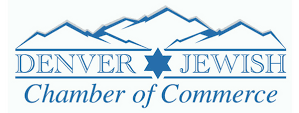Opening a Bakery Takes More Than Recipes
Opening a bakery sounds like a romantic notion: early mornings filled with warm dough, the smell of fresh cinnamon rolls wafting out to the street, and neighbors becoming loyal regulars. But that dream only gets off the ground with serious, rhythm-driven planning. From naming your venture to choosing the right oven, every step whispers (or sometimes screams) logistics, budget, and branding. Let’s walk through the real bones of what it takes—not just flour and fire, but permits, margins, and the guts to keep it running.
Know Your Startup Costs Before You Preheat Anything
No matter how skilled you are with laminated dough, your business won’t rise without cash. And not just a vague “it’ll be pricey” warning. You need line items, receipts, and contingency plans. Pull from the real numbers. The average bakery startup costs range from $125,000 to nearly $400,000, depending on location and concept. That includes buildout, equipment, initial staff wages, and enough runway to get through a few slow months. Many first-timers underestimate how much goes into plumbing upgrades, HVAC systems, and point-of-sale software—until they’re halfway through and already over budget.
Bake It Into a Plan—On Paper
A good croissant takes layers. So does a successful bakery. You can’t skip ahead to the frosting if you haven’t figured out the structure. Before you lease anything or buy your first whisk, you need a comprehensive bakery business plan. It’ll force you to spell out your market assumptions, pricing, supplier networks, and expansion vision. Even if you’re self-funding, write the plan. It’s the clearest way to catch blind spots—and it gives future employees, partners, and lenders a reason to trust your direction.
Don’t Skip the Name—It’s Your Breadcrumb Trail
Before you bake a single scone, you need a name that sticks. Your bakery name is a search signal, a brand story, and your first impression rolled into one. It has to feel right in a whisper and a shout. It needs to live on signage and in someone’s mouth. That’s why smart entrepreneurs start with curated bakery name ideas that align with their style and audience. Your name affects logo direction, tone of voice, even your social handles. Don’t treat it like an afterthought.
Location Isn’t Just Foot Traffic—It’s Daily Function
Yes, it’s tempting to grab a cute corner with lots of visibility. But if your delivery vans can’t access it, or if the floor plan can’t support an oven hood install, that charm wears off fast. You’ve got to think like a builder and a business owner. There are factors influencing bakery location choice that go far beyond ZIP code desirability. Look into zoning restrictions, utility access, neighborhood footfall patterns, and even how nearby businesses might cannibalize your category. The goal isn’t just buzz—it’s long-term operational sanity.
Buy the Tools That Match Your Throughput
Your equipment isn’t just a checklist. It’s your margin. Buy wrong, and you’ll burn out your mixer before month two or find yourself spending half your day doing what a mid-tier proofer could automate. Build from an essential bakery equipment checklist that makes sense for your scale. Consider what you can lease short-term and what you must own outright. Start small with essentials like a convection oven, dough sheeter, and mixer—then scale up once your menu and pace prove themselves.
Get Legal—Every Whisk Has Paperwork Behind It
Nothing kills momentum like paperwork delays. Health department approvals, fire inspections, seller’s permits—they don’t just appear. They stack, cascade, and, if ignored, shut you down. Don’t wing it. Start by understanding the full slate of bakery licenses and permits applicable to your city and county. This includes food handler certification, commercial kitchen clearance, and signage compliance. Even if you’re doing pop-ups or renting commissary space, you need to know your rights and responsibilities. Operating without a license isn’t edgy—it’s expensive.
Marketing Is More Than Posters and Cupcake Photos
Just because you built it doesn’t mean they’ll come. Bakeries live and die by regulars, word-of-mouth, and strategic foot traffic. You need both presence and personality. Bake loyalty into your model from day one with bakery marketing strategies that mix digital reach with analog charm. Think punch-card incentives, limited-time flavor drops, behind-the-scenes videos, and collaborations with local makers. It’s not about flashy campaigns—it’s about consistent, relatable rhythm. People want to feel like your bakery is their bakery.
Starting a bakery isn’t a passion project. It’s a full-time, multi-hat operation that blends creativity with logistics. Every loaf you sell lives inside a system of permits, schedules, margins, and customer touchpoints. If you romanticize only the baking, you’ll get crushed under the admin. But if you embrace the whole machine—the naming, the planning, the money, the marketing—you’ll bake not just bread, but a business that sustains itself. That’s the real recipe: one part heart, one part systems thinking, and one giant scoop of follow-through.

